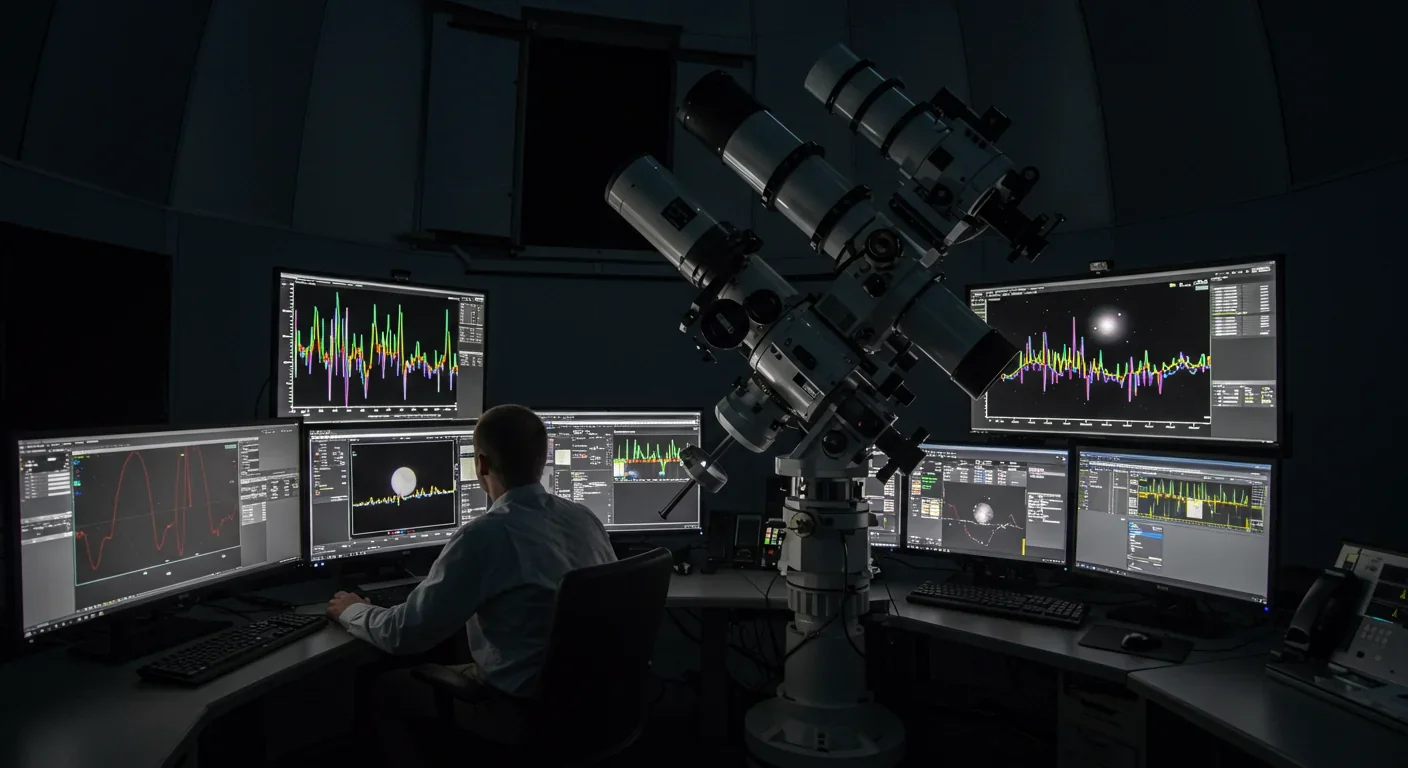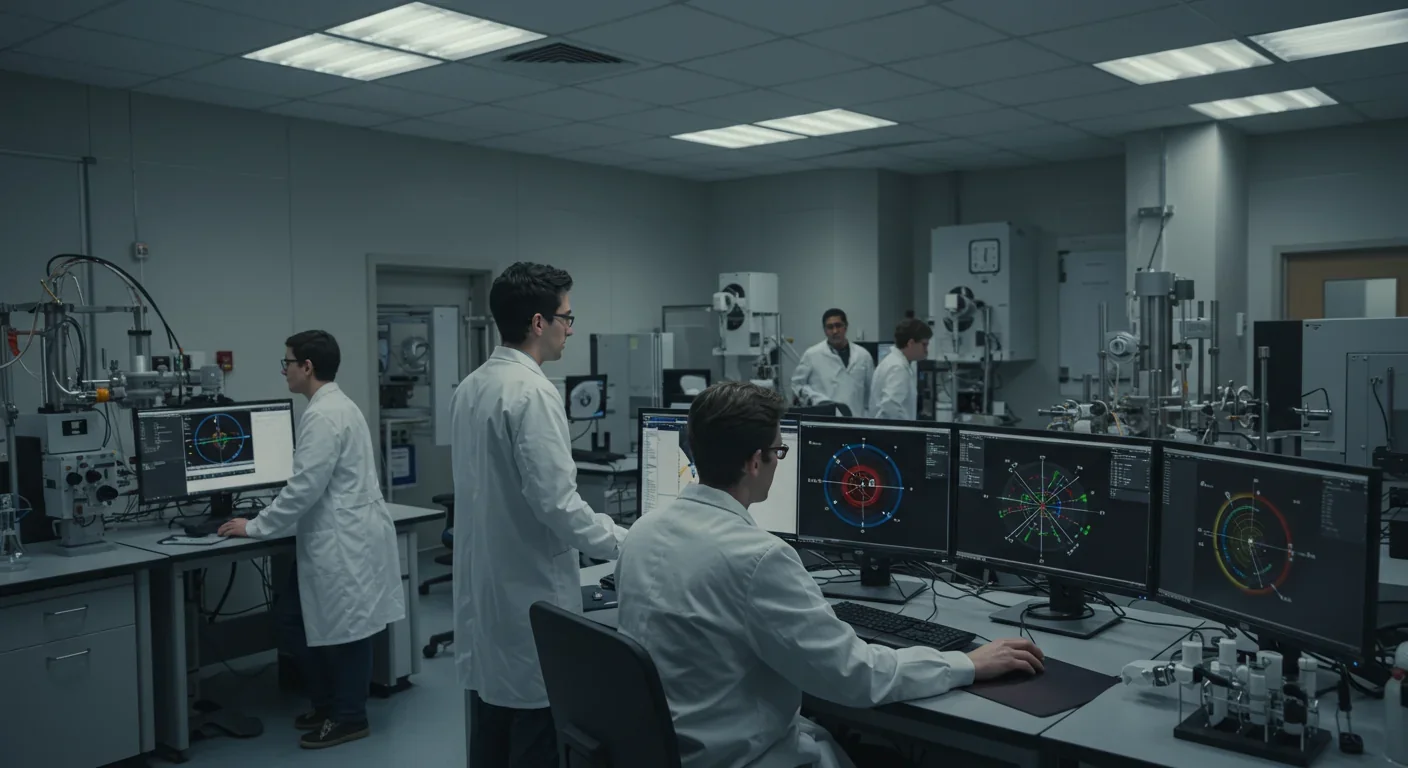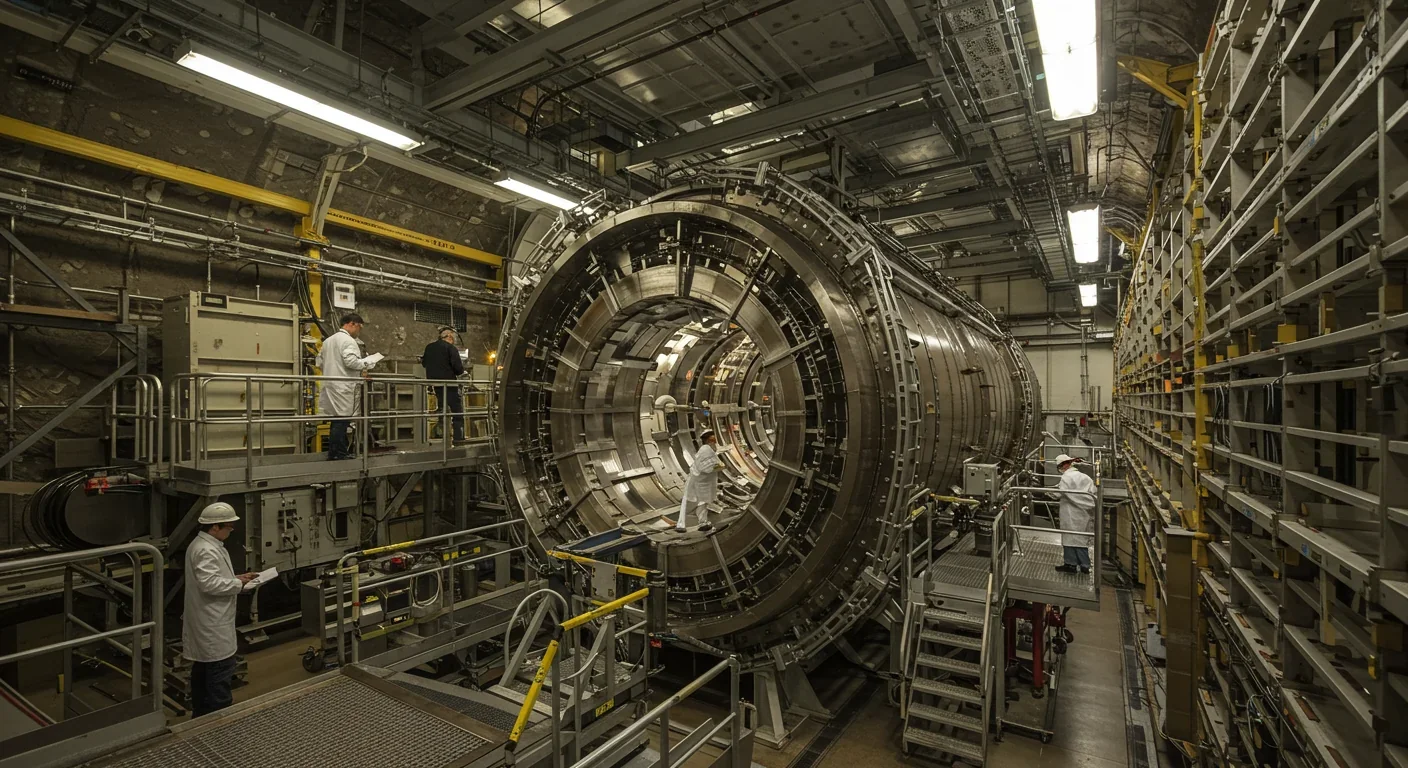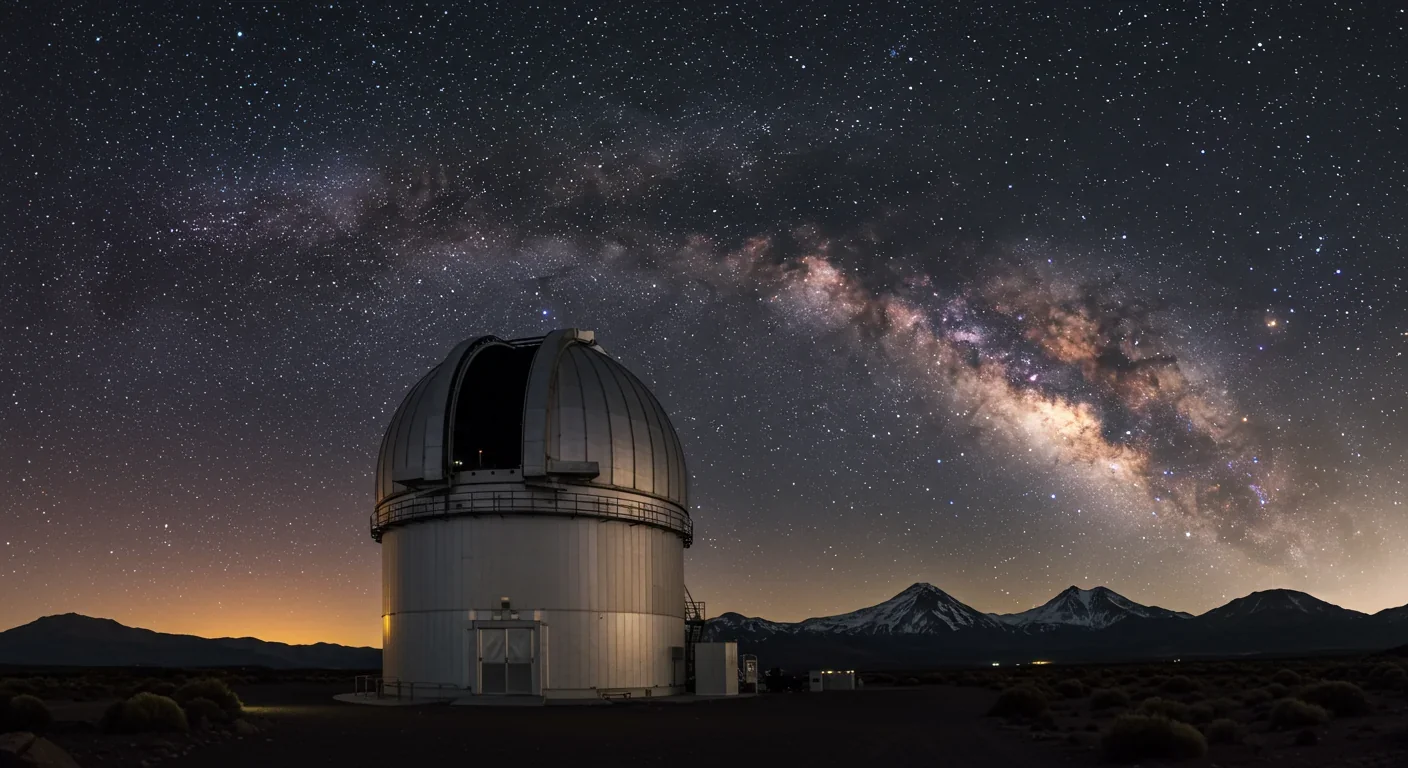White Dwarf Spectroscopy Reveals Destroyed Exoplanets

TL;DR: After 50 years of searching, physicists are closing in on dark matter using underground detectors, space telescopes, and particle accelerators. New experiments like LZ and JWST are narrowing the possibilities to WIMPs, axions, sterile neutrinos, or modified gravity, with detection expected within the next decade.

In 1970, astronomer Vera Rubin mapped the rotation curve of the Andromeda Galaxy and discovered something unsettling: stars at the galaxy's edge were racing far too fast. According to Newton's laws, they should have flung into space. Instead, they clung to their orbits, held by an invisible force. That mystery became the foundation of one of modern physics' most profound puzzles: dark matter, the unseen mass that makes up 85% of the universe's matter yet refuses to reveal itself.
Today, that puzzle is approaching a possible solution. New experiments from the LUX-ZEPLIN detector and observations from the James Webb Space Telescope are narrowing the possibilities, and physicists believe we're closer than ever to finally illuminating this cosmic ghost.
Dark matter isn't invisible because it's hiding. It's invisible because it doesn't interact with light at all. You can't see it, photograph it, or detect it with any conventional telescope. The only way we know it exists is through its gravitational effects on visible matter.
The Bullet Cluster, a cosmic collision between two galaxy clusters, provides some of the strongest evidence. When these clusters smashed together, the hot gas slowed down from electromagnetic friction, but something else kept going—passing right through without stopping. That something was dark matter, and astronomers could map its location by measuring how it bent light from distant galaxies behind it.
"We're closing in on dark matter, and soon, hopefully, its constituents will be illuminated," one astronomer noted after analyzing the latest JWST observations of the Bullet Cluster.
The pattern repeats across the cosmos. Galaxy rotation curves show stars moving too fast. Gravitational lensing studies reveal mass where nothing visible exists. The cosmic microwave background—the afterglow of the Big Bang—contains acoustic peaks that can only be explained if 85% of matter is something we've never directly detected.
Either the universe is filled with an unknown particle, or our understanding of gravity itself is fundamentally wrong.
Physicists have narrowed the possibilities down to a few leading theories, each predicting a different kind of particle—or no new particle at all.
Weakly Interacting Massive Particles (WIMPs) were once the favorite. These hypothetical particles would have roughly the mass of a proton but interact with ordinary matter only through gravity and the weak nuclear force. That makes them nearly impossible to detect, but not completely. If a WIMP occasionally collides with an atomic nucleus, it could produce a tiny flash of light or a recoiling electron.
The LUX-ZEPLIN (LZ) experiment, buried nearly a mile underground in South Dakota, hunts for exactly that signal. Its seven-ton tank of liquid xenon sits in a cavern shielded from cosmic rays, waiting for a WIMP to strike. After 280 days of data collection, LZ has seen nothing—but that null result is scientifically valuable.
"While we always hope to discover a new particle, it is important for particle physics that we are able to set bounds on what the dark matter might actually be," says UCSB experimental physicist Hugh Lippincott. Each round of data eliminates more possibilities, pushing theorists toward new ideas.
Axions are much lighter and stranger. Originally proposed to solve a different problem in quantum chromodynamics, these ultra-low-mass particles would be produced in enormous quantities—trillions passing through your body every second without leaving a trace. Experiments like ALPS II try to detect them by shining a laser through a powerful magnetic field, where photons could occasionally convert into axions and back again.
The Any Light Particle Search II uses a 106-meter-long cavity inside a 5.3-tesla magnetic field. If axions exist, the laser should produce a faint regenerated beam on the other side of an opaque wall—light shining through a barrier by briefly becoming something else.

Sterile neutrinos are a third option, and they're especially intriguing because they could solve multiple mysteries at once. Regular neutrinos come in three types, or "flavors," but several experiments have detected anomalies that hint at a fourth, "sterile" type that doesn't interact via the weak force at all.
"The search has galvanized physicists for decades, as the existence of sterile neutrinos could play a critical role in understanding fundamental processes in the early universe, provide viable dark matter candidates, and offer a natural explanation for the origin of neutrino masses," explains a team from the MicroBooNE collaboration.
The IceCube-Upgrade detector, embedded in Antarctic ice, will search for sterile neutrinos by analyzing how atmospheric neutrinos oscillate between flavors as they pass through Earth. If sterile neutrinos exist, they'll subtly distort those oscillation patterns.
Finally, there's Modified Newtonian Dynamics (MOND), which argues that we don't need dark matter at all—we just need to tweak the laws of gravity. MOND proposes that gravity behaves differently at extremely low accelerations, like those found at the edges of galaxies. The theory accurately predicts galaxy rotation curves and has survived several challenges, but it struggles to explain large-scale structures like galaxy clusters and the cosmic microwave background.
A 2023 study claimed that cold dark matter cannot explain galactic rotation curves, while MOND can—reigniting debate over whether the solution lies in new particles or new physics.
Finding dark matter requires pushing technology to its limits. The LZ detector collects both light and electrons from particle interactions, but the real challenge is distinguishing potential dark matter signals from background noise. Neutrons from cosmic rays can mimic WIMP collisions, so the detector is surrounded by gadolinium-loaded liquid scintillator that absorbs neutrons before they reach the xenon core.
"The tricky thing about neutrons is that they also interact with the xenon nuclei, giving off a signal identical to what we expect from WIMPs," explains graduate student Lindsey Trask.
To avoid unconscious bias, the LZ collaboration uses a technique called "salting"—injecting fake WIMP signals into the data stream during collection. Analysts don't know which signals are real and which are salted until the final "unmasking," ensuring that expectations don't influence the results.
"We're pushing the boundary into a regime where people have not looked for dark matter before," says science coordinator Scott Haselschwardt.
The XENON-nT experiment in Italy operates on similar principles but with an even larger xenon target. The Vera Rubin Observatory in Chile, set to begin operations soon, will survey the entire southern sky every few nights, mapping how dark matter warps spacetime across billions of light-years.
And the upcoming LISA mission—a space-based gravitational wave observatory—could detect dark matter indirectly by observing how it influences black hole mergers and the evolution of massive structures in the early universe.
If dark matter is detected, the implications ripple far beyond academic journals. Understanding what makes up 85% of the universe's matter would fundamentally reshape cosmology, particle physics, and even technology development.
The quest for dark matter has already driven innovation in detector technology. Ultra-sensitive photomultiplier tubes, developed for particle physics, are now used in medical imaging and quantum computing. Machine learning algorithms designed to classify particle events have been adapted for image recognition and pattern detection across industries.

More broadly, confirming the existence of a new fundamental particle would validate decades of theoretical work in supersymmetry or string theory—frameworks that predict entire families of undiscovered particles. Alternatively, if MOND proves correct, it would force a complete rethinking of general relativity and open the door to new physics beyond Einstein.
Dark matter also connects to the universe's ultimate fate. If dark matter particles decay over trillions of years, they could influence how galaxies evolve and whether the universe continues expanding forever or eventually collapses.
Experiments worldwide are converging on the answer from multiple directions. LZ will collect 1,000 days of data before it ends in 2028, pushing sensitivity to the theoretical limits for WIMPs. XENON-nT is already running, and next-generation detectors are in development with even larger targets and better background rejection.
Axion searches are exploring previously inaccessible mass ranges, and sterile neutrino experiments are expected to improve detection limits by two orders of magnitude over the next five years.
Meanwhile, space telescopes like JWST are refining dark matter maps with unprecedented precision. Recent observations of the Bullet Cluster found that its total mass—including dark matter—is several hundred trillion times the mass of the Sun, smaller than earlier estimates but more accurate thanks to JWST's sharper imaging.
The IceCube-Upgrade will provide unprecedented statistics of atmospheric neutrinos in the 1-10 GeV energy range, improving limits on sterile neutrino mixing by roughly two orders of magnitude for specific mass ranges.
If an experiment detects dark matter in the next decade, the discovery won't immediately answer all questions. Physicists will need to confirm the result across multiple independent experiments, measure the particle's properties, and figure out how it fits into the Standard Model of particle physics—or forces the creation of a new framework entirely.
If no detection occurs, the field will pivot. Perhaps dark matter is even more elusive than current theories predict, interacting so weakly that detection requires technology we haven't yet invented. Or perhaps the answer lies in modifying gravity, demanding a relativistic version of MOND that can explain both galactic dynamics and cosmological observations.
Either way, the search continues. Thousands of physicists, working in underground laboratories, Antarctic ice, and space observatories, are pursuing one of humanity's oldest questions: What is the universe made of?
And soon, after half a century of searching, we might finally know.

Over 80% of nearby white dwarfs show chemical fingerprints of destroyed planets in their atmospheres—cosmic crime scenes where astronomers perform planetary autopsies using spectroscopy. JWST recently discovered 12 debris disks with unprecedented diversity, from glassy silica dust to hidden planetary graveyards invisible to previous surveys. These stellar remnants offer the only direct measurement of exoplanet interiors, revealing Earth-like rocky worlds, Mercury-like metal-rich cores, and ev...

Hidden mold in homes releases invisible mycotoxins—toxic chemicals that persist long after mold removal, triggering chronic fatigue, brain fog, immune dysfunction, and neurological damage. Up to 50% of buildings harbor mold, yet most mycotoxin exposure goes undetected. Cutting-edge airborne testing, professional remediation, and medical detox protocols can reveal and reverse this silent epidemic, empowering individuals to reclaim their health.

Data centers consumed 415 terawatt-hours of electricity in 2024 and will nearly double that by 2030, driven by AI's insatiable energy appetite. Despite tech giants' renewable pledges, actual emissions are up to 662% higher than reported due to accounting loopholes. A digital pollution tax—similar to Europe's carbon border tariff—could finally force the industry to invest in efficiency technologies like liquid cooling, waste heat recovery, and time-matched renewable power, transforming volunta...

Transactive memory is the invisible system that makes couples, teams, and families smarter together than apart. Psychologist Daniel Wegner discovered in 1985 that our brains delegate knowledge to trusted partners, creating shared memory networks that reduce cognitive load by up to 40%. But these systems are fragile—breaking down when members leave, technology overwhelms, or communication fails. As AI and remote work reshape collaboration, understanding how to intentionally build and maintain ...

Mass coral spawning synchronization is one of nature's most precisely timed events, but climate change threatens to disrupt it. Scientists are responding with selective breeding, controlled laboratory spawning, and automated monitoring to preserve reef ecosystems.

Your smartphone isn't just a tool—it's part of your mind. The extended mind thesis argues that cognition extends beyond your skull into devices, AI assistants, and wearables that store, process, and predict your thoughts. While 79% of Americans now depend on digital devices for memory, this isn't amnesia—it's cognitive evolution. The challenge is designing tools that enhance thinking without hijacking attention or eroding autonomy. From brain-computer interfaces to AI tutors, the future of co...

Transformers revolutionized AI by replacing sequential processing with parallel attention mechanisms. This breakthrough enabled models like GPT and BERT to understand context more deeply while training faster, fundamentally reshaping every domain from language to vision to multimodal AI.